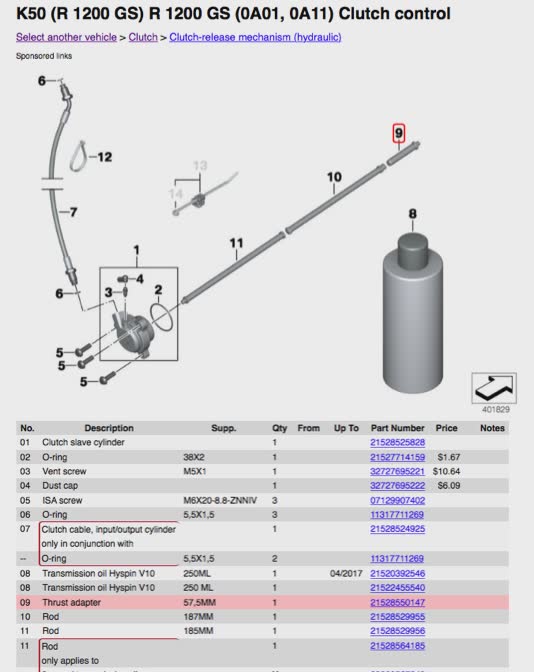It's possible that adjusting the plunger achieves the same result. Be interested to hear the outcome as it will be easier than opening up the clutch.
OK - I've tried the bike after the lever plunger adjustment, but with mixed results. At first I found that the clutch engagement was too close to the beginning of the lever movement when actually riding, so maybe having the engine running and gears turning makes a difference compared to feeling the engagement point with the bike on the centre stand and not running. Although there seemed to be an improvement on low gear upshifts, possibly due to it being quicker/easier to get more complete clutch disengagement when shifting up, it completely screwed up my downshifts, which had always been very good.
What seemed to be happening is that as I shifted down and blipped the throttle while releasing the clutch, it now took a significantly longer time for the clutch to re-engage, which messed up my muscle memory timings to coordinate shift, blip and clutch release. As a result the bike freewheeled momentarily before the clutch caught up, and re-engagement happened after the throttle blip leading to a very uncoordinated and jerky downshift. It is possible I would eventually have adapted and used much less clutch lever movement on downshifts, and adjusted the timing of the throttle blip, but it seemed to be too extreme a change so I decided to back off the adjustment a bit.
I now have a bit of an improvement on upshifts, and I will work on improving it further by trying to ensure I use as much clutch lever movement as possible in the lower gears to ensure full clutch disengagement. For downshifts, the now smaller change in clutch biting point after the second adjustment has been relatively easy to adjust to and get my timings in line for, so I think I will find that OK to adapt to after a period of use - no worse than riding a different bike and having to adjust to it.
While this may be worth trying as it is a relatively easy adjustment to make, I think it is really only affecting where in the lever travel you get maximum plunger movement. I would assume that the pistons in the master and slave cylinders only have a limited range of movement, so if, due to the push rod in the clutch being too short, the maximum plunger movement is not enough to fully disengage a hot clutch, then there may still be some clutch drag. However, I would have thought that if this is happening you would get the bike trying to creep forward when stopped in gear with the clutch lever held in and the brakes off. I don't get that with my bike, even when hot, so I am reassured that the clutch can be fully disengaged within the range of available lever movement.
Incidentally, in looking into this I have not so far been able to find any exploded diagrams showing the location of the slave cylinder and where the clutch actuating rods are accessed, but the limited information I have found seems to indicated that the slave cylinder is at the back of the engine behind the starter motor, hence the long actuating rods. I'm not sure if the final section, which seems to be the push rod in question, can be withdrawn and replaced from the back which seems unlikely, or whether it only comes out from the front so needs the clutch cover to come off and the oil to be drained first.





 ..
..


